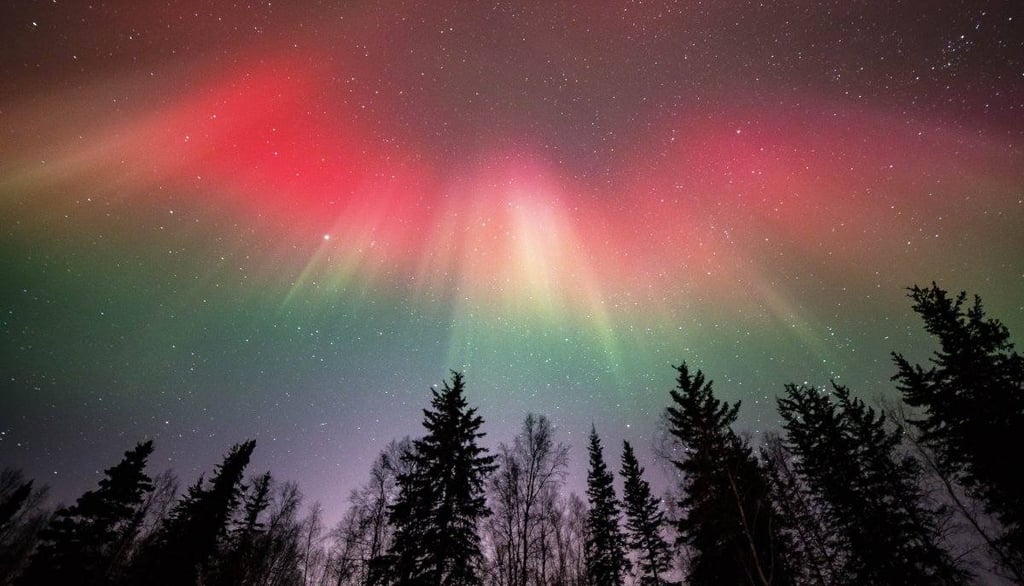What can you tell from the color of an aurora?
Geoff Jenkins
9/11/20252 min read


Auroras — the northern and southern lights — are among the most striking natural phenomena on Earth. While they inspire awe, they are also a real-time display of the complex coupling between the solar wind and Earth’s upper atmosphere. Each color of auroral light carries specific physical meaning, revealing both the chemical composition of the atmosphere and the altitude at which charged particle interactions occur.
Oxygen: Green and Red Emissions
The most familiar auroral color is green, produced when energetic electrons excite atomic oxygen at altitudes of about 100–250 km. These excited oxygen atoms emit light near 557.7 nm, creating the bright green curtains and arcs commonly photographed.
At higher altitudes, above ~250 km, oxygen atoms emit red light near 630.0 nm. The thin atmosphere at these heights allows excited oxygen to release energy slowly, producing long-lasting crimson glows. Red aurora often appears during strong geomagnetic activity, when solar wind energy penetrates deeper into the magnetosphere-ionosphere system.
Nitrogen: Purples and Blues
Molecular nitrogen and ionized nitrogen are responsible for the purples and deep blues sometimes visible at lower altitudes (<100 km). Nitrogen produces a range of emissions depending on its ionization state and the energy of precipitating electrons. These emissions often appear at the fringes of green auroral arcs, blending into violet or pink tones.
A Window into Near-Earth Space Physics
In effect, the aurora is a dynamic visualization of processes in near-Earth space. Energetic electrons guided by Earth’s magnetic field collide with atmospheric constituents, producing emissions that map directly onto plasma processes occurring thousands of kilometers above. The colors trace the altitude structure of energy deposition, revealing how solar wind–magnetosphere interactions couple into the ionosphere.
Spacecraft observations show that the same electron populations responsible for aurora are often accelerated during magnetic reconnection and wave–particle interactions in the magnetosphere. These processes energize electrons, shape their pitch-angle distributions, and deliver them along magnetic field lines into the polar atmosphere — where their effects become visible as aurora.
Looking Up, Seeing Physics
The next time you find yourself beneath the auroral oval, remember that you are not only witnessing something beautiful but also observing the physics of plasma–atmosphere coupling in real time. Each shade encodes information about the altitude, composition, and energy dynamics of Earth’s upper atmosphere. In that sense, auroras are nature’s own plasma diagnostics tool, right above our heads.
